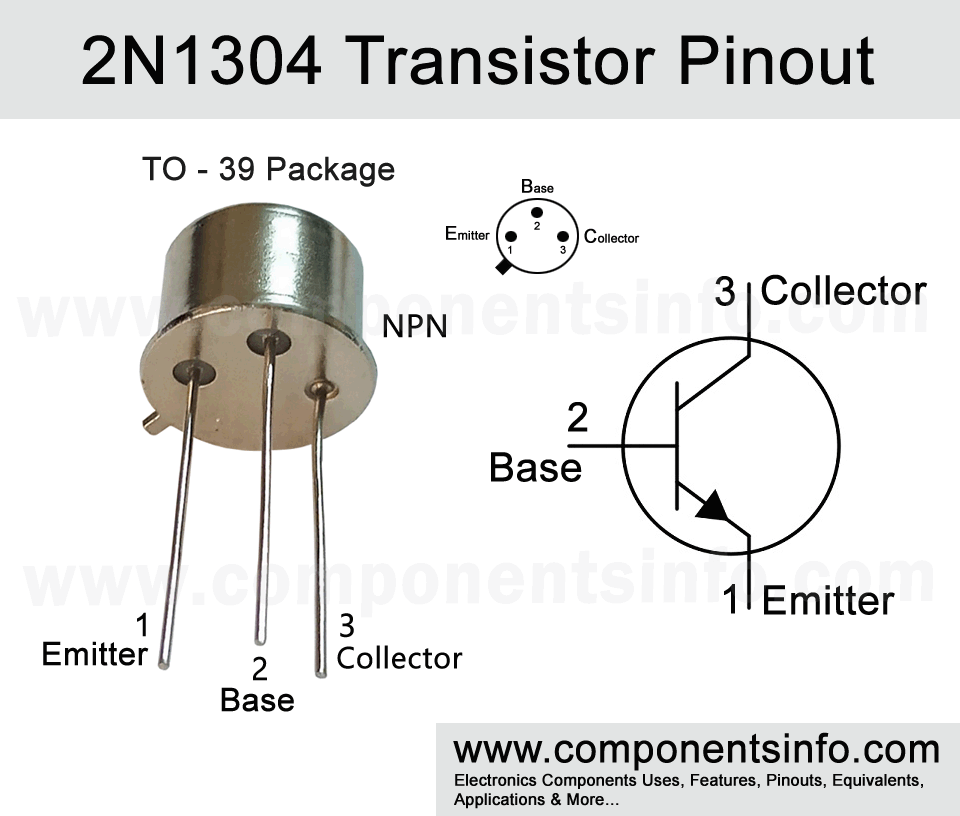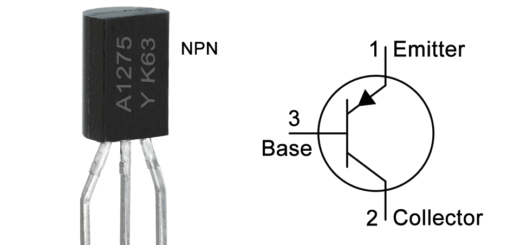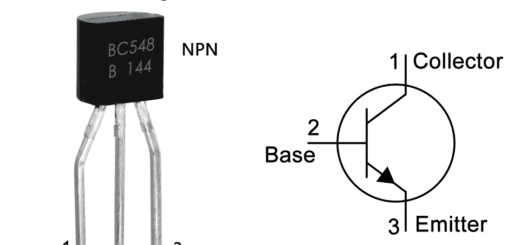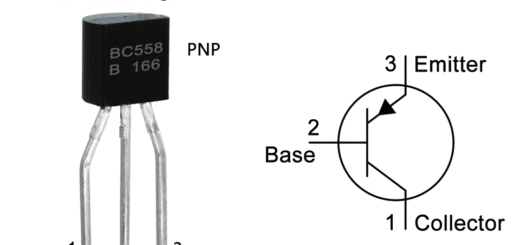2N1304 Transistor Pinout, Features, Applications, Equivalents and More
2N1304 is a TO-39 package NPN germanium alloy junction transistor from 2N130x series. It was made to use in old computers and also for switching purposes. The article below contains information about 2N1304 transistor pinout, features, applications, equivalents and other details.
Absolute Maximum Ratings:
- Package Type: TO-39
- Transistor Type: NPN Germanium
- Max Collector Current(IC): 300mA
- Max Collector-Base Voltage (VCBO): 25V
- Max Emitter-Base Voltage (VEBO): 25V
- Total Power Dissipation (PD): 150mW
- Minimum & Maximum DC Current Gain (hFE): 40 to 200
- Max Storage, Operating & Junction temperature range: -65 °C to +200 °C
Replacement and Equivalent:
NTE101, 2N1302, 2N1304, 2N1306
2N1304 Transistor Explained / Description:
2N1304 is an NPN transistor available in TO-39 transistor package. 2N1304 is a transistor of 2N130x series which also contains other transistors such as 2N1302, 2N1306 and 2N1308. All of the transistors in the series are almost similar and can be used as equivalents.
The transistor is made with germanium alloy which is a material used in the making of this transistor but it is an old technology and was mostly used in the 1950s to 1960s later these transistors were replaced by silicon transistors which are more reliable and provided better performance in electronic circuits. But these old transistors are still used by some hobbyists to build guitar pedals and to repair the old guitar pedals. Guitar pedals are devices that are used by guitarists to add effects in their guitar sound. These pedals are also called stompboxes, these pedal circuits are mostly housed in small metal casings and contain footswitch, some control knobs, an LED indicator, toggle switch and input and output jacks.
Looking at the specs of the transistor it has the maximum collector to base voltage is 25V, max emitter to base voltage is also 25V, max continuous collector current is 300mA, max power dissipation is 150mW, max operating temperature is from -65°C to +85°C and max storage temperature from -65 to +100°C.
Where We Can Use it & How to Use:
These transistors are not manufactured and used anymore but still some hobbyists and guitarists use them to build guitar pedals, other than that it can also be used in amplification and switching applications. To use this transistor in any circuit first check its pinout and connect its base to the input signal and also use a current limiting resistors between the input signal and the transistor’s base. Then connect its emitter to the negative supply of the circuit and connect its collector pin with one side of the load and other side of the load will be connected to the positive supply of the circuit.
Applications:
Old Computers
Audio amplifier and other audio related applications
Switching and Driving Loads
Oscillator Circuits
Radio and RF Applications
Any general purpose applications that falls under its ratings
How to Safely Long Run in a Circuit:
Safe operating guidelines to use the transistor are as follow.
- Do not use the transistor to its absolute maximum ratings and stay at least 20% below from its max ratings.
- The maximum collector to base voltage is 25V so stay under 20V.
- The maximum emitter to base voltage 25V therefore stay under 20V.
- The max collector current is 300mA so the derived load should be under 240V.
- Max power dissipation should not be more than 150mW.
- Use a suitable heatsink with the transistor.
- Always maintain the operating temperature from -65°C and below +85 °C. by not using it in an environment where there is a chance to go above these limits.
- Follow the same safety for the storage temperature, and maintain it between -65°C to +100°C by not storing it in an environment where there is a chance of temperature increasing or decreasing from these limits.
Datasheet:
To download the datasheet just copy and paste the below link in your browser.
https://z3d9b7u8.stackpathcdn.com/pdf-down/2/N/1/2N1304_CentralSemiconductor.pdf



